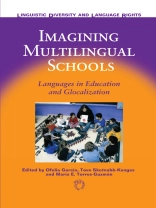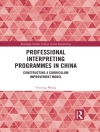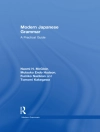This book brings together visions and realities of multilingual schools throughout the world in order to examine the pedagogical, socioeducational, and sociopolitical issues that impact on their development and success. The chapters describe and analyze pedagogical, instructional, and policy efforts to develop multilingualism through school with different targeted populations — immigrant students, indigenous peoples, traditional minorities, majorities, and multiethnic/multilingual groups. Each contribution, many written by well-known scholars in the field of bilingual and multilingual education, affirms the desirability of multilingualism as a societal resource and as a right of individuals, while acknowledging the social, economic and political differences that make the acquisition of multilingualism easy for some, and difficult for others. And yet, the book focuses on the school as a place of promise and resistance, having the potential to preserve, recover, and expand the world’s linguistic diversity. The introduction, written by the co-editors, identifies the conceptual threads that are developed throughout the chapters. But the chapters themselves remind us of the importance of local conditions, despite the global pressures of the 21st century, in imagining and creating multilingual educational spaces.
Содержание
I. INTRODUCTION
1. Weaving Spaces and (De)constructing Ways for Multilingual Schools: The Actual and the Imagined — Ofelia García, Tove Skutnabb-Kangas and María Torres-Guzmán
II. PEDAGOGIES, VALUES AND SCHOOLS
2. Identity Texts: The Imaginative Construction of Self through Multiliteracies Pedagogy — Jim Cummins (OISE, University of Toronto)
3. Imagining Multilingual Education in France: A Language and Cultural Awareness Project at Primary Level — Christine Hélot (Institut Universitaire de Formation des Maîtres) and Andrea Young (Institut Universitaire de Formation de Maitres)
4. Reclaiming Multilingual America: Lessons from Native American Youth — Teresa L. Mc Carty (Arizona State University), Mary Eunice Romero (Arizona State University), Ofelia Zepeda (University of Arizona)
5. Attitudes Towards Language Learning in Different Linguistic Models of the Basque Autonomous Community — Feli Etxeberría-Sagastume (Universidad del País Vasco/ Euskal Herriko Universitatea)
III. EXTENDING FORMAL INSTRUCTIONAL SPACES
6. Back to Basics: Marketing the Benefits of Bilingualism to Parents — Viv Edwards (University of Reading) and Lynda Pritchard Newcombe
7. Popular Education and Language Rights in Indigenous Mayan Communities: Emergence of New Social Actors and Gendered Voices — Karen Ogulnick (Long Island University)
IV. TENSIONS BETWEEN MULTIPLE REALITIES
8. Imagined Multilingual Schools: How Come We Don’t Deliver? — Elana Shohamy (Tel Aviv University)
9. Monolingual Assessment and Emerging Bilinguals: A Case Study in the US — Kathy Escamilla (University of Colorado)
10. The Long Road to Multilingual Schools in Botswana — Lydia Nyati-Ramahobo (University of Botswana)
V. NEGOTIATING POLICIES OF IMPLEMENTATION
11. Nichols to NCLB: Local and Global Perspectives on US Language Education Policy — Nancy Hornberger (University of Pennsylvania)
12. Cultural Diversity, Multilingualism and Indigenous Education — Luis Enrique López (Universidad Mayor de San Simón)
13. Multilingualism of the Unequals and Predicaments of Education in India — Ajit K. Mohanty (Jawaharlal Nehru University)
Об авторе
Professor María E. Torres-Guzmán is a professor in bilingual/multicultural education at Teachers College, Columbia University, New York, NY. She has primarily focused on teacher development and cultural aspects of the education of language minority populations in the United States, Spain and elsewhere.












